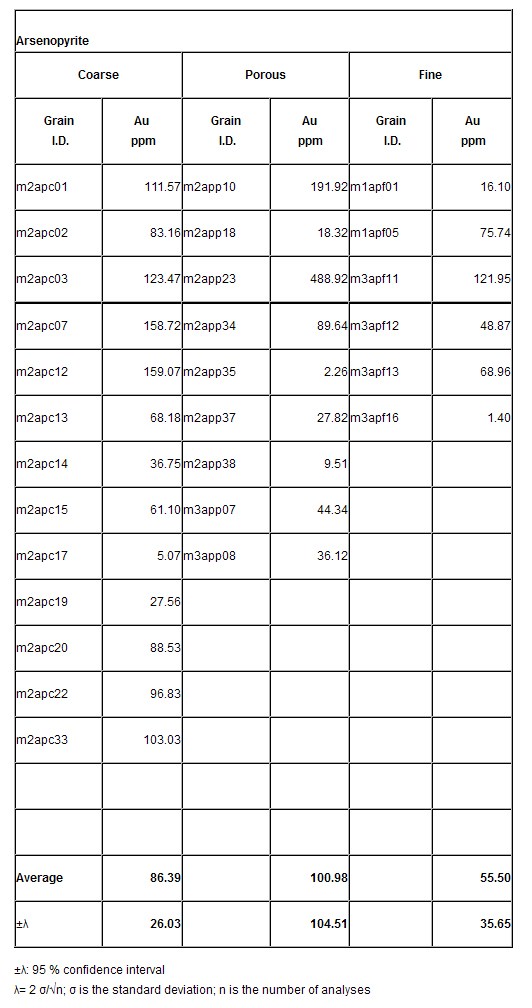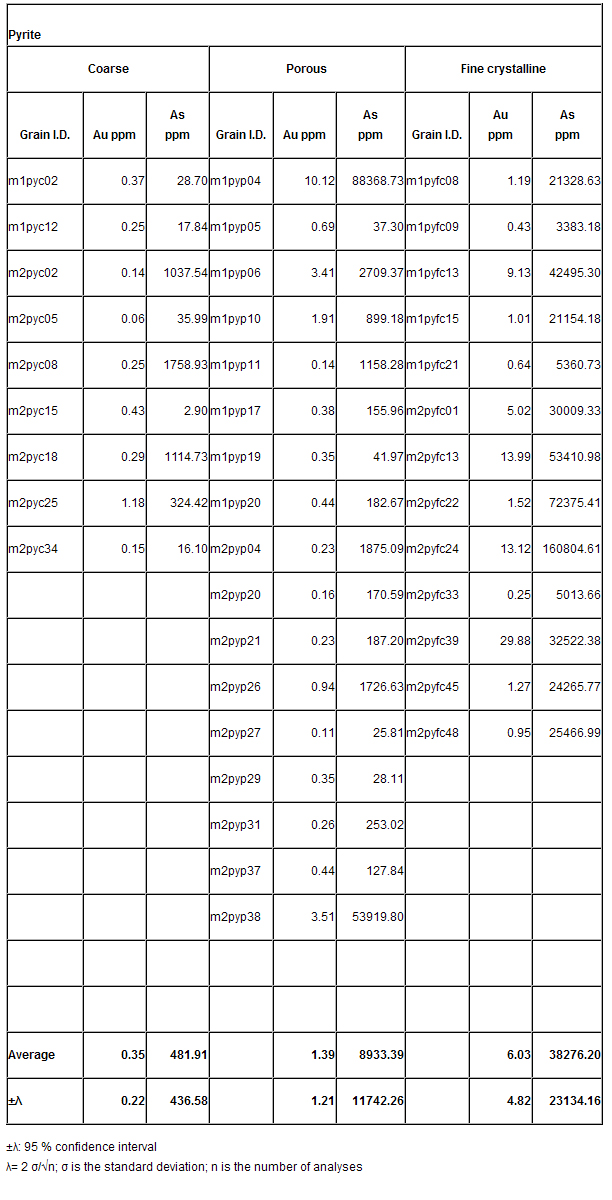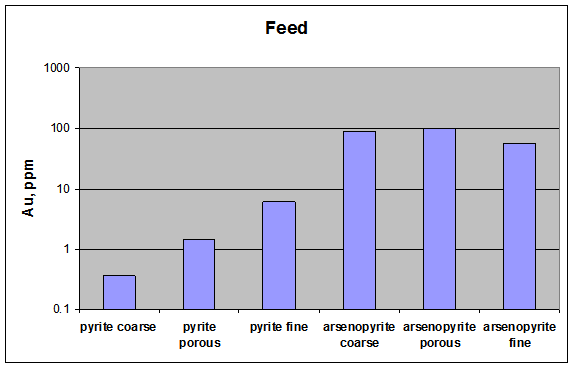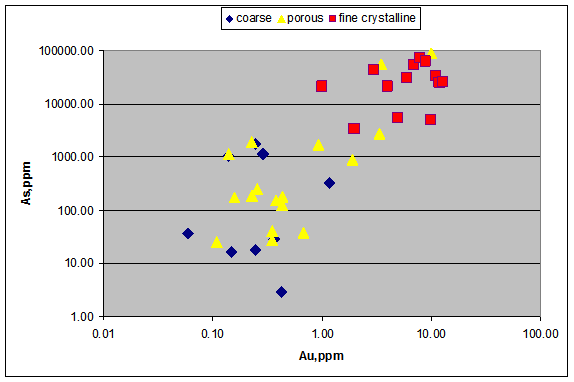Request for analysis:
A refractory feed ore sample containing pyrite and arsenopyrite mineral phases was to be analysed for the presence of “invisible” sub-microscopic gold.
Objectives:
Methodology:
Polished sections from specific size fractions of the ore sample were prepared and grains representing both mineral phases were selected and marked for analysis. These mineral particles were analysed using the Cameca IMS-3f SIMS instrument and concentration depth profiles for Au, As, S and Fe were produced. The quantification of sub-microscopic gold and arsenic in pyrite and gold in arsenopyrite was established using internal mineral specific standards.
Results of the study:
Three different morphological types of pyrite (coarse, porous and fine) and arsenopyrite (coarse, porous and fine crystalline) were studied. The quantified sub-microscopic gold and arsenic (for pyrite only) concentrations in arsenopyrite and pyrite are listed in Tables 1 and 2. Concentrations measured in each grain and their average values per mineral type with corresponding 95% confidence intervals are included in the tables.
Major findings:
Table 1 – Measured concentrations of sub-microscopic gold in arsenopyrite

Table 2 – Measured concentrations of sub-microscopic gold and arsenic in pyrite.


Figure 1. Comparison by mineral type of the measured mean values of sub-microscopic gold concentration.

Figure 2. Scatter plot of gold and arsenic concentration in different morphological types of pyrite grains.

Figure 3. Concentration depth profiles of sub-microscopic gold.
A) coarse arsenopyrite grain containing solid solution gold: Au=158.72ppm
B) coarse pyrite grain containing colloidal gold: Au=1.18ppm

Figure 4. Sub-microscopic gold and arsenic distribution in a coarse pyrite grain.

